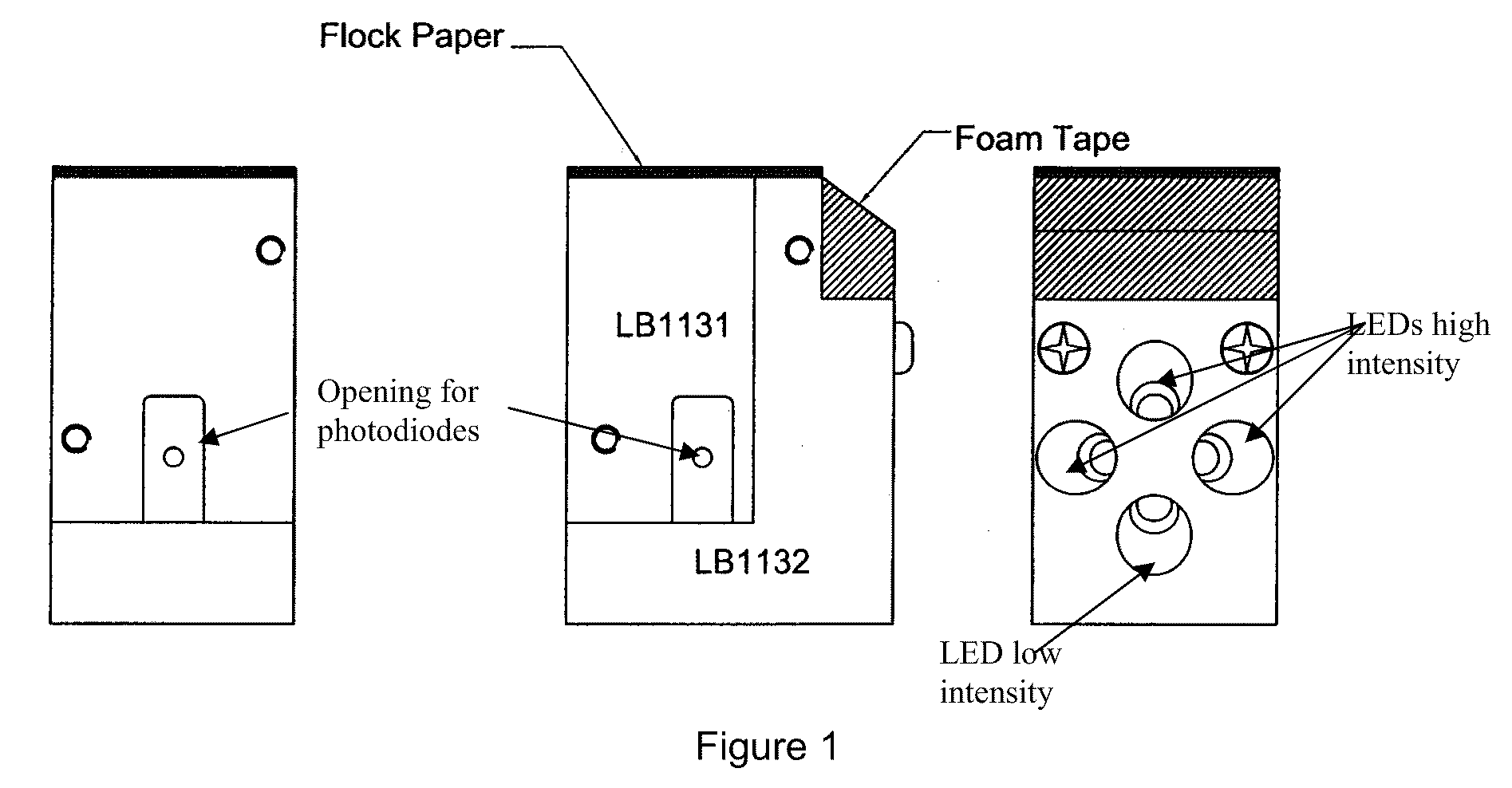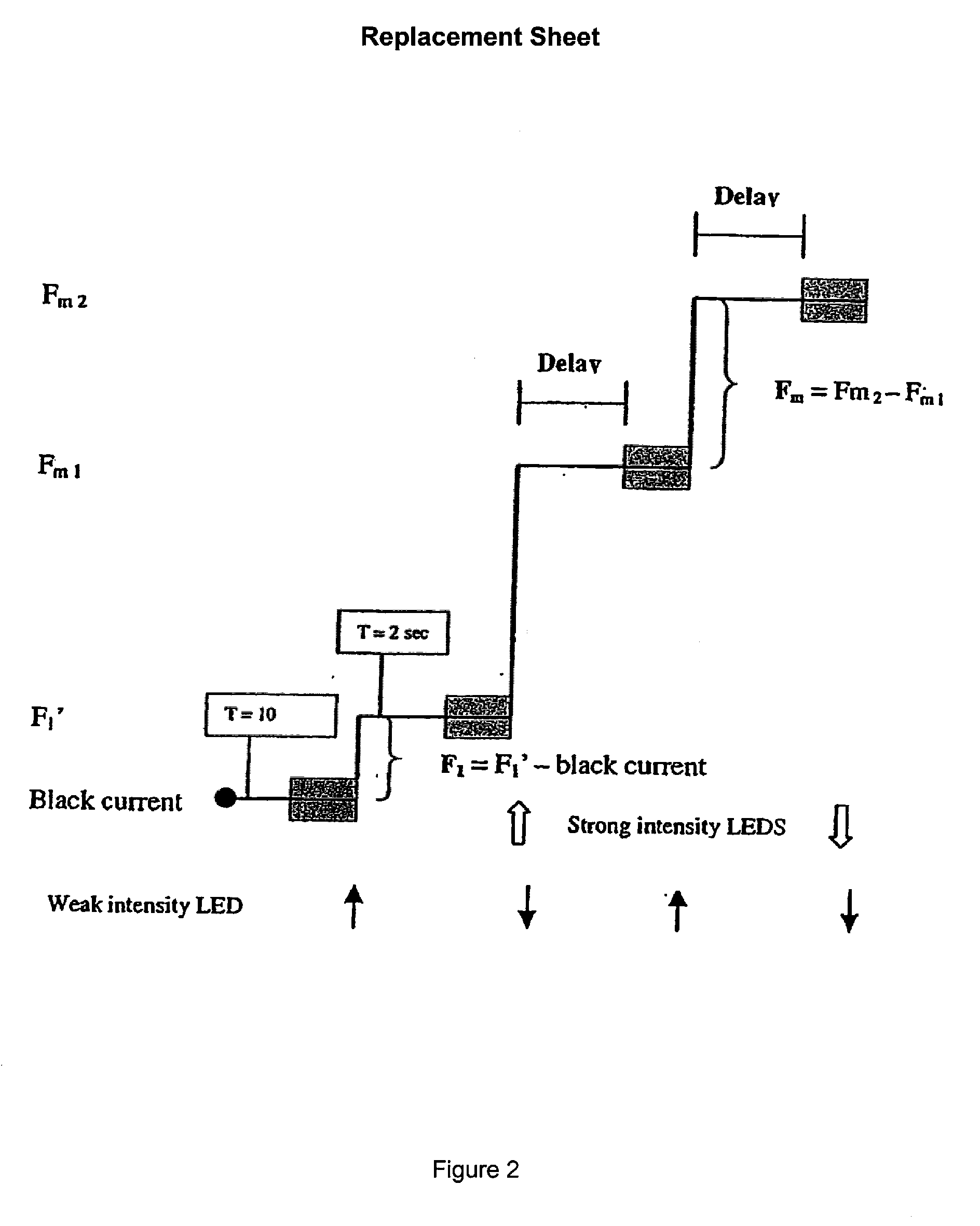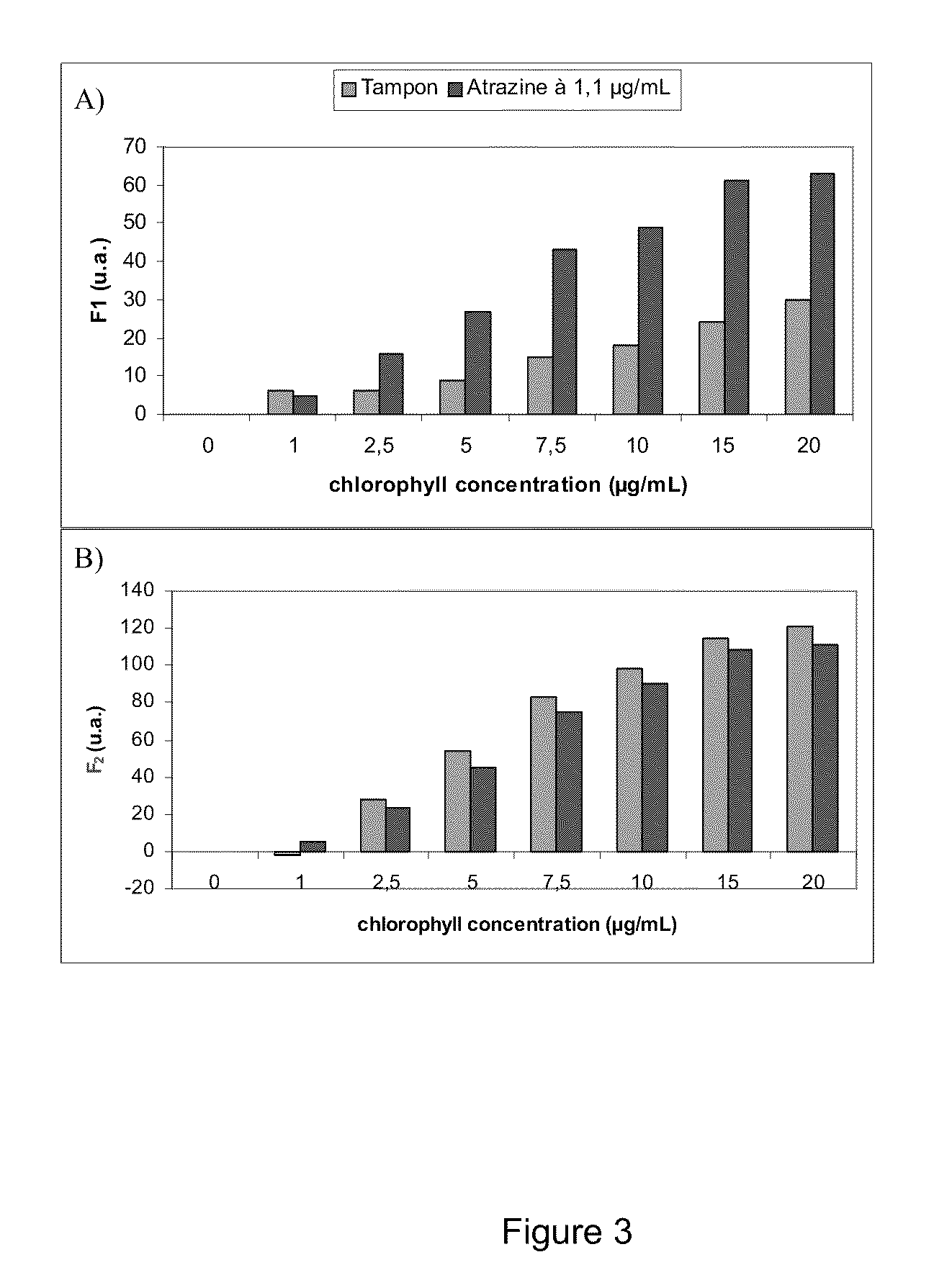Biosensors, and method and kits for using same
a technology of biosensors and kits, applied in chemical methods analysis, metal testing, material testing goods, etc., can solve the problems of relatively complex, expensive and bulky apparatuses of pulsed light fluorometers
- Summary
- Abstract
- Description
- Claims
- Application Information
AI Technical Summary
Benefits of technology
Problems solved by technology
Method used
Image
Examples
example 1
[0039]In a specific embodiment, a fluorometer continuously illuminates weakly the photosynthetic biological material with a light emitting diode (LED) emitting light at a wavelength of 475 or at 660 nm. Better results were obtained with the 475 nm wavelength. In order to obtain a higher sensitivity for measuring the photosynthetic response to toxic molecules, the intensity of the low excitation light was adjusted so as to obtain a F1 fluorescence level slightly higher than F0.
[0040]Fluorescence measured 2 sec after turning on one LED is F1. Three additional LEDs are then turned on so as to induce actinic illumination F2. Dispersion of LEDs is illustrated in FIG. 1. Light beams are oriented so as to form together a point of convergence precisely at the level where the photodiode is read. After a specific time, selected according to the nature of the thylakoid membranes used (eg. source of thylakoids, etc.) (Table 1), of the background noise and of the level of sensitivity ...
example 2
Preparation of Thylakoid Membranes
[0044]All steps are conducted in the dark or under green light and at cold temperature (samples on ice or procedure in cold room). Thylakoid membranes are isolated from 100 g of deveined spinach leaves. Spinach leaves are then crushed in a mixer with homogenising a buffer comprising TES-NaOH 20 mM pH 7.5, sorbitol 330 mM and MgCL2 5 mM. Other conventional buffers could be used including TES, Hepes, Tris, phosphate, tricine and MOPs. The homogenate is filtered on a cheese cloth and the filtrate is centrifuged 2 min at 2500×g at 4° C. on a Eppendorf™ 5810-R, rotor # A-4-44.
[0045]The pellet is then resuspended in a hypotonic solution consisting in 1 in 20 of the homogenising buffer. This step is used to lyse the chloroplast membranes. The resulting solution is then crushed in a Wheaton™ mixer and centrifuged 3 min. at 3500×. The resulting pellet contains the purified membranes. They are then resuspended in a buffer consisting of TES-NaOH 20 mM pH 7.5, ...
example 3
Preparation of Ready to Use Stabilised Thylakoid Membranes Formulation
[0046]A preparation of 2 to 3 mg / mL of thylakoid membranes were mixed with a pH 6.5 phosphate buffer containing: 0.02 M phosphate, sucrose 300 mM, NH4Cl 10 mM, MgCL2 20 mM, EDTA 10 mM, polyvinylpyrrolidine (PVP) (125 μL of solution 20% for 1 mL) and liposomes constituted of phosphatidylcholine and phosphatidylglycerol in a ratio of 10:1 to obtain a solution of 0.0125 mg of liposome / mL of chlorophyll / thylakoid membranes buffered solution. In this stabilised thylakoid membrane formulation, the final concentrations of PVP is of 2% v / v, the final concentration of liposomes is of 0.0125 mg / mL v / v and that of chlorophyll is of 0.125 mg / mL v / v.
[0047]The PVP increased the stability of the thylakoid preparations as compared to the same preparation without PVP but a useful stability was nevertheless obtained even without PVP. The amount of PVP may be varied without affecting the stability of the thylakoid membranes between ...
PUM
| Property | Measurement | Unit |
|---|---|---|
| concentration | aaaaa | aaaaa |
| wavelength | aaaaa | aaaaa |
| wavelengths | aaaaa | aaaaa |
Abstract
Description
Claims
Application Information
 Login to View More
Login to View More - R&D
- Intellectual Property
- Life Sciences
- Materials
- Tech Scout
- Unparalleled Data Quality
- Higher Quality Content
- 60% Fewer Hallucinations
Browse by: Latest US Patents, China's latest patents, Technical Efficacy Thesaurus, Application Domain, Technology Topic, Popular Technical Reports.
© 2025 PatSnap. All rights reserved.Legal|Privacy policy|Modern Slavery Act Transparency Statement|Sitemap|About US| Contact US: help@patsnap.com



